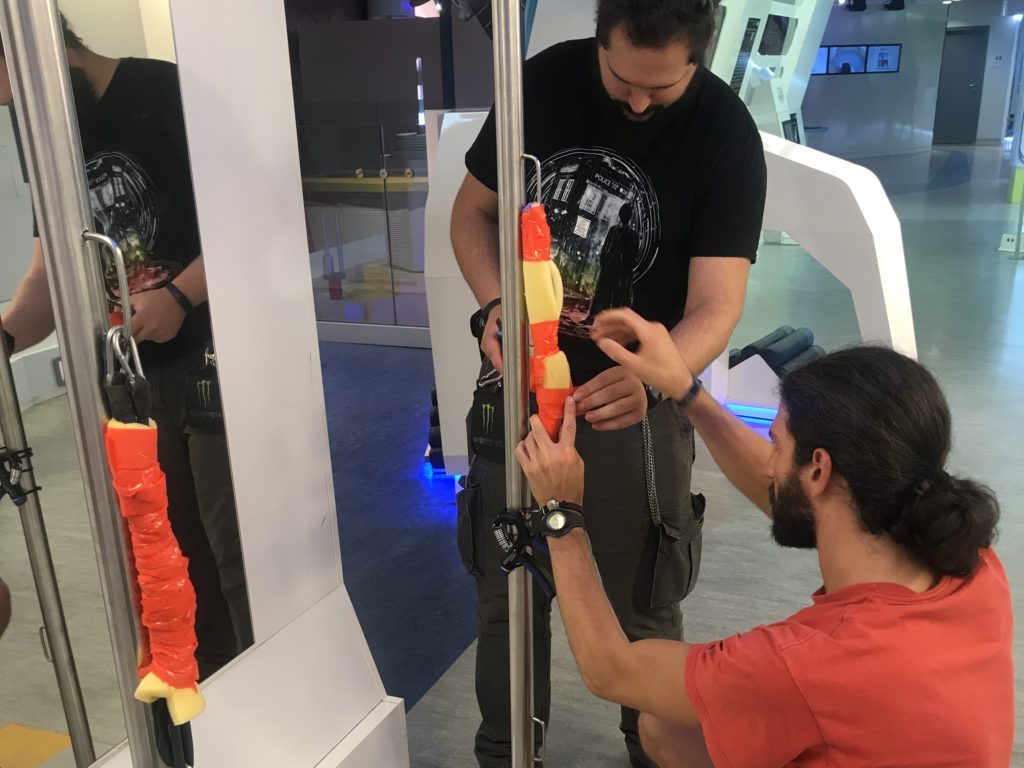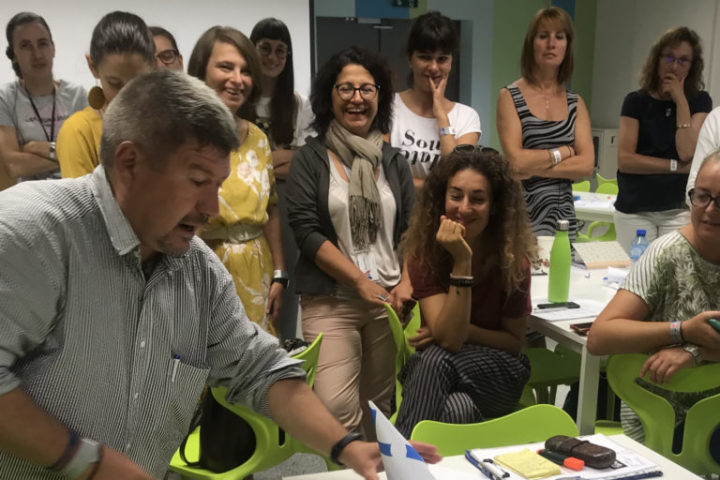
Paul Orselli
President and Chief Instigator at POW! (Paul Orselli Workshop, Inc.)
Museums have no borders,
they have a network
February 17, 2020
Keywords: Bulgaria, Muzeiko, Fulbright, prototyping, exhibitions
As part of the Fulbright Specialist Program, I was fortunate to engage in workshops with staff and community partners at Muzeiko, the first children’s science museum in Bulgaria.
While my primary purpose was to help build internal capacity at Muzeiko – related especially to exhibitions development, prototyping and engaging with community partners, I also learnt (or re-learnt!) some things I think would be useful for anyone working to develop better exhibitions and programmes at museums.
The core group of people I worked with included museum staff from various departments at Muzeiko, community partners (including architects and specialists in “Escape Rooms”) and Joe Cook, a lead exhibition developer from the German fabrication firm Huttinger.
We had fun working together and bouncing ideas of each other every day, but even though I was the ostensible “leader” of the process, there were a number of times that we were all not in lock-step agreement with how best to move forward. Some people might advocate for ways to change and improve an exhibition element, while others felt just as strongly about eliminating the exhibition altogether and replacing it with something new. And those disagreements (driven by passion for the work we were all doing) were an important part of the process because it forced us to consider how different types of visitors might have strong feelings about the exhibitions, too!
Whenever I share my goals and expectations for a workshop, museum folks often say something along the lines of ‘I don’t think we will be able to do all that …’ However, the fact that people have deliberately blocked off time on their calendars to meet with someone from the ‘outside’ provides the luxury of large blocks of time uninterrupted by phone calls, emails, and the many tiny distractions that normally bog down a museum worker’s day.

People often resist the notion of prototyping by saying they don’t have the time or money to prototype — to which I instantly reply, ‘if you don’t have time and money to prototype your exhibitions, will you have time and money to fix your mistakes once you’ve installed your exhibitions?’ Also doing fast and simple prototyping exercises with just paper and masking tape is a nice way to ‘break the ice’ by introducing prototyping as a tool for building internal capacity.
Prototyping is a way of ‘thinking with your hands’. But if you don’t have a good range of simple materials to think and tinker (thinker?) with, your creative momentum will often stall — so connect with your workshop hosts to make sure you have good access to tools and materials (even if you have to pack your own index cards!) I really like using whiteboards for workshops more than those big paper easel pads — they’re reusable and taking pictures of each whiteboard before they are erased provides easy images to drop into follow-up reports (or ICOM Voices articles!)
More action and less talk is the best way to change/make/improve exhibitions. Rather than only talking about ways of changing and improving exhibitions in abstract ways, we focused on doing, by taking our prototyping materials out into the museum to start making simple changes we could talk about with visitors. I learnt a new Bulgarian word during this trip: the Cyrillic spelling would be: Можело; the English pronunciation would be: Moj-e-lo. This word loosely translates as: ‘We can do this!’ or ‘This can be done!’ Exactly the right attitude for prototyping!
So, what are you waiting for? Gather your co-workers and community partners together with some markers, tape, and paper to start ‘thinkering’ your way to a better museum!
Visit the Muzeiko website to learn more about this wonderful museum. You might even get inspired to visit Bulgaria, which I would highly recommend to any museum professional!
References and Resources:
The Muzeiko website: http://www.muzeiko.bg/en
More information on POW! (Paul Orselli Workshop, Inc) available at: www.orselli.net
Paul Orselli’s blog: https://blog.orselli.net/2019/09/searching-for-index-cards-in-bulgaria.html
More information on Fulbright Specialist Program available at: https://tinyurl.com/s2t5exx
More information on the German fabrication firm Huttinger available at: https://www.huettinger.de/en/
Opinions expressed in the article do not commit ICOM in any way and are the responsibility of its author.
To participate in our newest ICOM Voices call for contributions, click here.
